There are many things that can happen to your garden that you wouldn’t even consider being a problem, pests and diseases. Either of these can wreak havoc very quickly without a sign that it was there. You need to know what to look for and ways to prevent it before an infestation can occur. There are several different ways to eliminate the issue at hand. As with any gardener you would prefer to do so organically but that is not always an option.
Pests
When I think of pests I think along the line of birds and rabbits. These larger pests can be prevented from your garden by using fencing to protect the garden as a whole. Seedlings can be protected with mulch to keep anything from getting to the stem and roots. I have also seen pie pans and CD’s that are hung to discourage the pests because of the reflection and the noises made. However, the bigger pest issue for your garden comes in much smaller forms.
Beetles
The flea beetle is one that likes to feed on the young plant. They can eat away at the leaves of the seedling and then it fails to grow.
Aphids And Mites
The green aphid attacks the plant while it is young, leaving it wilted, they can also spread viruses. Mites feed on the leaves of the plant leaving it deformed. To treat aphids and mites dip the plants in cold water to wash off and kill them.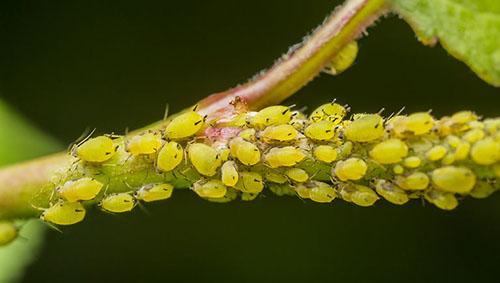
Caterpillars
The Caterpillars feast on plants but do not kill them. It is recommended to not kill the caterpillar, but to share a few plants with them. Soon enough you will have butterflies in your garden.
Thrips
Thrips are a female insect that does not need a male to produce eggs. They are a small insect that is yellow as a nymph and becomes darker as an adult. Thrips cut into the skin of the plant and suck the juices out. Plants become splotchy, pale, silvery in color and then die.
Related: How to Keep Moisture and Pests Away from Your Food Stockpile
Snails and Slugs
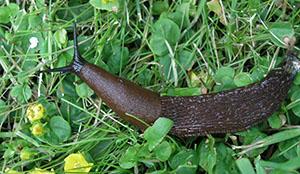
Slugs and snails are small soft bodied pests that feed in your garden. The difference is the snail has a shell while the slug does not. To control them in your garden you can use egg shells or diatomaceous earth around the plants to prevent them from crawling over it, or hand pick them off and dispose of them.
Carrot Root Fly
The female fly lays eggs in the soil and the eggs hatch into a creamy-white legless worm. The worms eat the roots of the plant and stunt its growth. To treat, you can mix one part hydrogen peroxide to 10 parts of water up to twice a week.
Tomato Hornworm
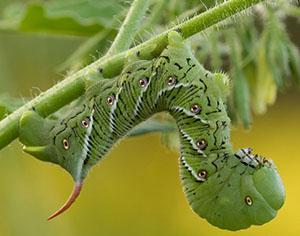
The hornworm is a green caterpillar with white and black marks over their body and a horn at its rear. This pest is well camouflaged amongst your plants and can grow to be five inches long. The hornworm prefers to feed on plants in the nightshade family; tomato, pepper, potato, eggplant, and tobacco plants. This pest can destroy a lot in one night. A helpful tip to find the hornworm is to look for droppings around the plant, if you see dark droppings a worm should be in that area.
Cutworms
The cutworm is a green-brown caterpillar that lives in the soil. They feed on seedlings and young shoots of the plant just under the soil. When eating the cutworm likes to cut the stem in half. The cutworm is a non crawling worm; so the easiest method to keep it from eating your plant is to build a barricade that it can’t get over. This can be as simple as a rolled newspaper to keep them from getting through the soil and getting your plant.
Wireworms
Wireworms are the larvae of click beetles. They can grow to 1 1/2 inches long and are from yellow to dark brown in color. They have a segmented hard shell and three pairs of legs in the segment just behind their head. The wireworm will feed on most fruit and vegetable garden plants. They prefer to feed on underground roots, seeds, stems, and tubers causing them to wilt and die. It is hard to eliminate the wireworm since it is an underground feeder.
A good way to trap them is by using a potato as bait. Spear sticks into the potato and bury it about three inches in the ground with a stick still showing. The potato traps can be buried every three to ten feet apart. The wireworm will feed inside of the potato so in a week dig up all your marked potato traps and discard them. Getting rid of the potato will also take the unsuspecting wireworm with it. Do not compost the potato trap as it will allow for reinfestation.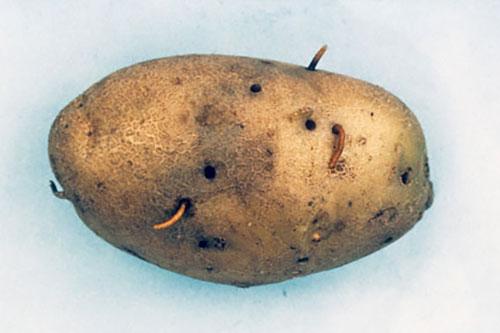
Related: How To Make Potato Flakes With 5 Years Shelf Life (without refrigeration)
Armyworms
This worm will eat holes in your leaves or eat the whole leaf. The young larvae are green-brown in color and grow to be one to two inches in size. To rid the armyworm you may need to physically remove them by hand or have a natural enemy that enjoys them, such as ladybugs or wasps.
Pests in your garden can be very obvious or can be hidden in the soil or amongst the plants. It is always a good idea to be proactive and take extra steps in preventing an infestation. A good way to prevent pests is to always clean all of the debri out of your garden at the end of the season. A good organic insecticide you can use is neem oil. These pesky little buggers are probably better removed by hand. Till the soil at a depth of six to eight inches to help kill off any dormant pests.
Diseases
Diseases in your garden can range from being bacterial, viral, and fungal. Some plants can be affected by either form of disease and some are more prone to one over another.
Bacteria
Bacteria thrive in oxygen depleted tissue. A good idea to keep in mind to help eliminate a bacterial outbreak in your garden is to allow space between your plants. The space allows for the plants to be able to breathe. Another good way to prevent a bacterial infestation is to plant from pathogen free seeds and rotate your crops every year in the garden.
Bacterial Soft Rot:
This disease causes more crop loss worldwide. It can affect any type of plant species. Soft rot is caused by water soaked spots that are soft, sunken in and brown in color.
Bacterial Leaf Spot:
This disease makes small water soaked spots between the leaf veins that turn dark brown to black in color. Overhead irrigation splashing the plants can cause this.
Bacterial Wilt:
This disease usually starts in younger plants. You will notice wilting and withering of the leaves and stem. When cutting a stem you may notice a dark green ooze and see some water streaks in the plant.
Basal Rot:
This disease is also known as bulb rot and can infect all flower and crop bulbs. The shoots can fail to emerge from the soil or are stunted in growth with a color that ranges from yellow to red-purplish shades.
Scab:
This bacterial disease shows crusty lesions on any part of the plant or the produce. Infected plants will show leaves that wither and then drop early from it. Once a bacterial infestation has started there is no treatment. You will need to remove the infected plant completely from the garden. Discard the plant in the trash by tying it into a seperate bag or burn the whole plant. Do not leave it in your garden and do not compost it.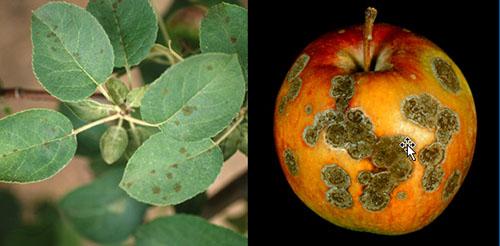
Fungus
In the garden the most common disease is a fungal infection in your soil or on the plants. Fungus can be treated with an organic fungicide. A fungal infection can spread between your plants from spores in the soil. Prevention is the best protection when it comes to fungal disease in your garden.
Related: 10 Reasons Why You Need to Make Room for the God of Fungi in Your Backyard
Damping Off:
This disease is caused by soft rotting seeds that fail to germinate or that die off as soon as they emerge through the soil. Plant seeds in well drained soil being certain to not overwater.
Powdery Mildew:
The leaves, shoots, and the stem of the plant can be covered in a white powdery growth. This disease is spread in the air and thrives in high humidity and is more prevalent in shaded areas.
Downy Mildew:
This fungus thrives in damp and cool environments. Downy mildew is a white mold that spreads down the entire plant causing it to fall over.
Leaf Spots:
The leaves start with yellow spots and then darken to brown and have a golden halo around it. The leaves wilt and then fall off. It is also good practice to water the soil and try not to get the plant and foliage real wet.
Smut:
Smut is a fungus that attacks, but doesn’t always kill, seedlings as they grow. If the seedling survives it will not be healthy. The affected seedlings will develop a thicker plant with dark blister patches on the leaves. The smut can also look like dirt is on your seedling.
Blight:
This fungus is also called gray mold. The plant starts with sudden yellowing, browning, and wilting and then it dies. Blight prefers conditions that are cool and moist.
Purple Blotch:
This fungus creates purple blotches on the leaves and prefers moist and humid conditions. Purple blotch mainly affects onions.
Related: 11 Food Storage Lessons Learned from WWI
Pink Root:
This fungus causes the roots and outer layers of the bulb to turn pink and then darken to a deep purple. Pink root can cause the roots to shrivel up and die.
Crown and Root Rot:
This disease causes leaves to turn yellow and brown and then the plant dies. This is usually caused by the soil being too wet.
White Rot:
This fungus leaves tiny black dots on the leaves and plants. When you pull the plant you will notice that there are no roots but instead white mold in their place. White rot can live in the soil for up to 15 years.
As always when treating diseases in your garden it is good practice to try to use disease free seeds. Also, rotating your crops and planting your garden in soil with proper drainage is very helpful. The use of a fungicide works very well in controlling any fungal disease that your garden may have. Do not compost the infected plant as the fungus can reinfest later. Be careful not to cross contaminate the soil by walking in the old area and transferring it to the new planting area. A little work will go a long way in protecting your garden.
You may also like:
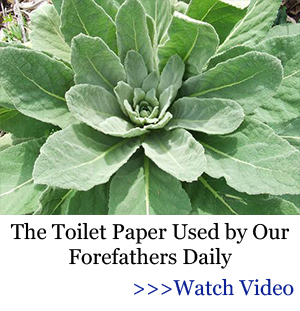 The 24 Highest Calorie Vegetables for Your Survival Garden
The 24 Highest Calorie Vegetables for Your Survival Garden
The U.S. Army’s Forgotten Food Miracle (Video)
10 Bugs You Should Never Kill In Your Garden

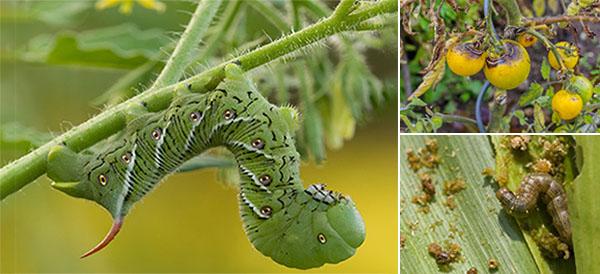
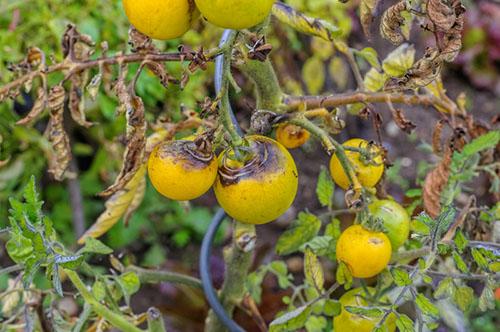













We had a big problem last year with anasa tristis, how can I get rid of them?
The little boogers are cyclical so hopefully they won’t reappear for a few years, hard to kill. I’ve known a couple of people who gave up gardening because of squash bugs. Guinea hens are said to help, but I’d almost rather have squash bugs than a bunch of guineas running all around (they don’t look before they cross the road). Might give habanero pepper tea a try, there are recipes online, I haven’t seen a bug it won’t kill.
I had a few, but also have hungry lizards. They don’t seem to do a lot of damage to tatume/calabacita. I don’t have personal experience, but Indians say they love buffalo gourd and will go feed there. Another thing way, always plant squash with maize. Guineas? Man, there you have it. there has to be a God. something that stupid could not survive without divine intervention. 🙂 niio
So where in this long write up is the instruction on how to get rid of the pests???
For the pests I like the flame thrower effect. Man, nothing can survive 1500 degrees of intense heat. And for the disease factor, just broadcast multi vitamins around garden and the next rain will dissolve them and treat whatever ailment the plant has. You are welcome
My greatest pests are Peacocks. Our neighbor has a huge flock of these things. They roam freely and basically eat nearly anything they can get their beaks on. Planning on getting a gun this year, even though I really don’t want to do that.
Chuck: A bb gun or an airsoft gun should be a big help. Don’t get a pellet gun as that can injure or kill the bird and perhaps get you in trouble with the local animal control (who obviously are not controlling the pest birds, of course) or worse yet the local bambiest folks which is worse than the black plague.
Daisy is selling their 75 anniversary edition of the Red Ryder bb gun from A Christmas Story so you could kill two birds with one bb to pose a really bad pun. The bb only goes out the muzzle at about 450 feet per second, so it won’t penetrate heavy feathers and pretty darned soon the birds will get the idea.
There are some new developments in bbs these days. There are lead bbs (not lead shot called bb that is a different size). They have the advantage of carrying further than steel bbs and don’t ricochet as much. There are also bbs now that are made of a material that disintegrates when it hits a solid target. They might be ideal for peacocks. They are too light to penetrate the bird but may be annoying enough to make the bird go back home. Their range is more limited than steel or lead. I don’t know what distances you are talking about, so you might try each and see what kind of results you get. You can find them at Pyramid Air Guns. Other on line air gun dealers may have them but I get at least one e-mail a day from Pyramid and I know they carry them.
I am not as familiar with air soft, but there are even automatic air soft guns. Nothing like getting hit with a hail of little round plastic balls to discourage errant fowl. If you don’t mind scouring the grass, you could even retrieve the air soft pellets and reuse them.
Hope this helps. Be cautious in repelling the pests as there are so many folk today who have next to nothing in the way of knowledge about animals and think they are equal to humans. They can be quiet obnoxious.
Hey neighbor, the strangest thing happened. Your peacock got in my back yard and just fell over dead. You may want to cage the others up so they too just don’t fall over dead. That’s just strange!!
a wise farmer, who also held a PhD in agronomy, said, nothing much survives a cows guts. Or, for that matter, any animal’s. Now, what was old, is new. Orchardists are doing walk-thrus with livestock, which eat all fallen fruit and leaves (and will do a number on the trees, as well, if you’re not careful) but carry away and kill what they eat. We did this after June drop, and animals ate the insects that caused it. Most diseases in apples are caused by a lack of boron. 1 level teaspoon of boron to one gallon warm water. ! quart water sprinkled about the drip line of the tree. And always clean up every leaf and fallen fruit. It took Dad a couple of years, but he cut back on sprayed for pests and diseases by a mile. Face it, get it right NOW because in a few years, we may not have the luxury of chemicals. niio
I love the horn worms, they turn into beautiful moths like hawk moth and hummingbird moth, but one big fat juicy tomato horn worm can ruin a whole tomato plant in one night of feasting. So I very carefully with a trigger sprayer type bottle treat the maters in my vegetable garden with Bt spray, a bacteria that kills all moth and butterfly larvae. But since it is 100% deadly to all those beautiful critters I use it nowhere else, I have big butterfly gardens around my house and, as the article suggested, always plant some tomatoes for the horn worms there. We always have some white flowering plants on and around the porches and it’s really cool in the evening as it gets dark to see the big moths feeding at the flowers.
The butterflies have already had their SHTF event, their numbers are way down, so good Preppers should also keep a Prepper garden for butterflies.
I have two ‘pet’ chilies that they targeted last summer, eating both to the stems a few times. Not the lone tomato or other chilis or even the tobacco, but those two. Tomatillo, nope. More than likely, too much nitrogen in the fertilizer. it draws pests like brats to candy. Heat, as well, caused stress, which draws them to VICTIMIZE those chilis 🙂 Grow California buckwheat. It likes it hot and dry, and should bloom all summer. niio
guinea hens are good at cleaning up on all kinds of worms and bugs in a garden
Yeah, but guinea fowl will get your neighbors coming around with torches, pitchforks, hot tar, fence rails and feather pillows. Regular chickens do a pretty good job of cleaning up insects that frequent your garden.
Chuck: Ha! they do make good target practice. niio
Hey left coast, you worry too much how your neighbors feel, discreetly rid the problem and all is well
Insects won’t eat healthy plants. If you don’t know how to make plants healthy, you don’t know much. Plants need 17 minerals to be healthy. Most people only give them 3.
That’s usually true, but if they get too much nitrogen, they make sugars and bugs love that. Feed the soil and that feeds the plants. Minerals should be present in the soil for plants.Some plants are better than others are scavenging them. See what Gabe Brown says about his start in ranching. He graduated from chemicals to no till to only using a very little grass herbicide. His soil was 1.5% organic matter when he started and yellow, to some fields 11% today and black 3 feet deep. He’s had neighboring ranchers call and complain because their crops drouighted out (they get 16″ if rain a year) while his was healthy and good–with no irrigation. niio
So, Mr. Knowledable, tell us how to keep our plants so healthy the bugs won’t like them. Tell us the simple way.
Since you seem to know how, share the knowledge!
Freida: Me? A friend on the other side of the state (Arizona) complained his cole crops were being eaten by bugs. A little snug, I said mine are fine. No problems here! 3 days later the collards looked like someone took a shot gun to them. Packrats burrowed under the turnips and sweet potatoes and helped themselves. I admitted this, sheepishly, and it stopped. 🙂 !
Well-fed, not poorly-fed, plants are like people. We tend to throw off problems. Chilis, I have two ‘pet’ chilis in pots. Hornworms ate both to the nub several time,s but not the ones planted in the ground. Why? In pots, they depended on me, where those in the ground didn’t. Both environments are the same, plants are the same age, but those that get what they want, they thrive under adverse conditions. Potted ones don’t. here, chilis are perennials outdoors if you want to bust hump all winter for them. And, it was only those two who had an issue with hornworms. Not the tomatoes or tobacco, all of which is planted in the garden, not pots.One tomato cutting was brought in for the winter and is now in bloom with plenty of toms on it.
For most problems, look to the soil. Feed the soil so it can feed the plants. A heavy mulch means cool root zones and healthy plants. Very few like it hot in the soil. If you have borers in the vines (cucs and squash bugs) plant buffalo gourds, which they prefer. the gourds are toxic to us and most animals, but will not cross with your plants. some insect damage makes the plants healthier in the long run. Some! niio
@Freida: Wow. Cranky?
Let’s just be nice.
Information is information, even when it comes in the form of a comment. Yours provided nothing.
So, Mr. Knowledable, tell us how to keep our plants so healthy the bugs won’t like them. Tell us the simple way.
Since you seem to know how, share the knowledge!
Freida: Gabe Brown, N. Dakota, stopped buying pesticides. He ranches on 5,000 acres, and now needs only a little herbicide to control grass. He plants cover crops and built up his soil from 1.5% organic matter.humus to in some fields, 11%. With a lot of plants always in bloom, he has plenty of predatory insects and birds to cover any problem. You can find him on YouTube. niio
Any suggestions for rats and mice? they eat everything.
A dachshund works here. No rats or mice, the rattler eats them, but the dachshund burrows. We also can use yucca root peelings, raw, on most rodents (non-native). Raw peelings are toxic, but take time to kill, so the rodents will feast on them for several days. Old timers used to mix cement with cornmeal and sugar. Rodents cannot pass the cement. Hot peppers will stop any rodent from living near you. If you can, encourage non-venomous snakes. Corn and king eat a lot of rodents, and king snakes eat venomous snakes. niio
Hot peppers boiled about 6 will do in a dutch oven , a small squirt of soap and and 6 large garlic cloves crushed a TBSPN of Sesame oil Boil it in water .When your tomatoes come in cut off a handful of leaves to kill off pests on other plants .. grind all of this in a blender to make it cook faster filll pot with water boil it on a grill . make sure it tastes terribly hot then strain through a colander with a thin clean dish towel or old thin t shirt or a coffee filter …spray Plants every 3 days before bugs start and every time it rains .Be sure to cook this on a grill outside use goggles and avoid inhaling .. or be prepared to step out while it simmers on the stove with the windows open and a fan or two exhausting outside , . cook a half an hour untill the veggies are soft .. let it cool before straining
Slugs are a horrible problem in the PNW. By accident I found that coconut fibers keep them off. Guess they can’t slither across the fiber. Use old hanging basket liners around my basil and strawberries.
NW: A sister living in Pennsylvania dragged me to help load mulch. The landscaper said to use cardboard under the mulch to kill slugs and snails. His house is close to the Susquehanna river, and he said he rarely finds slug damage in his garden. A plus, fish worms love the stuff. niio